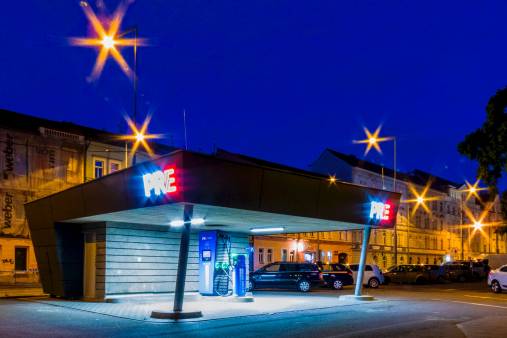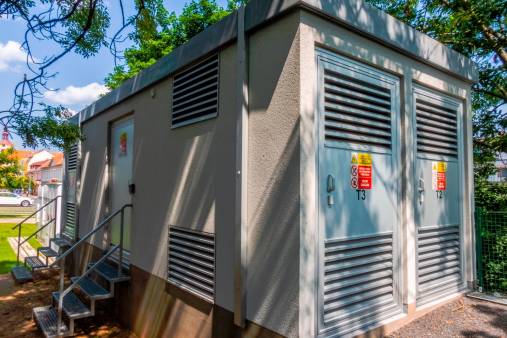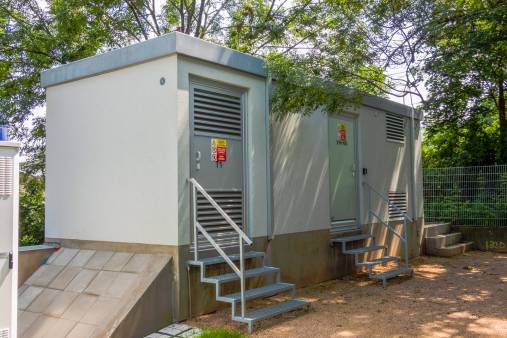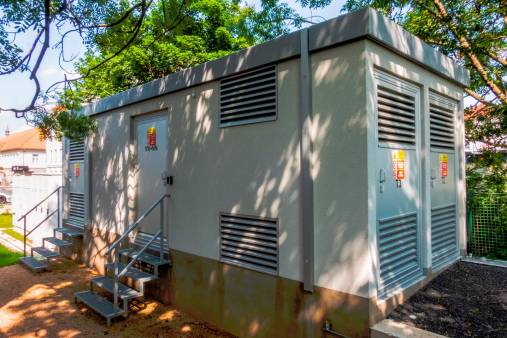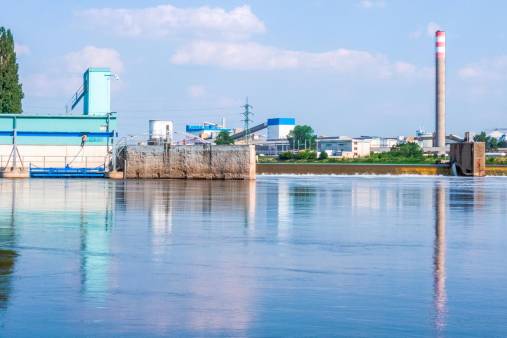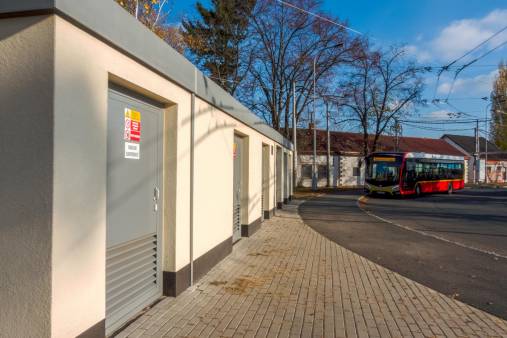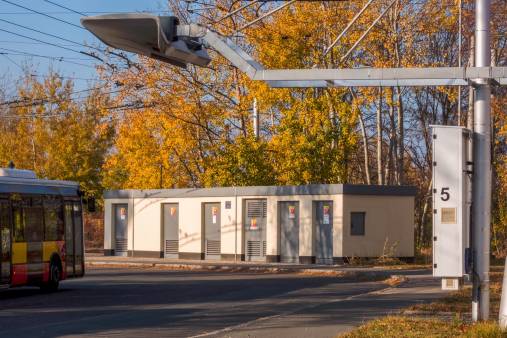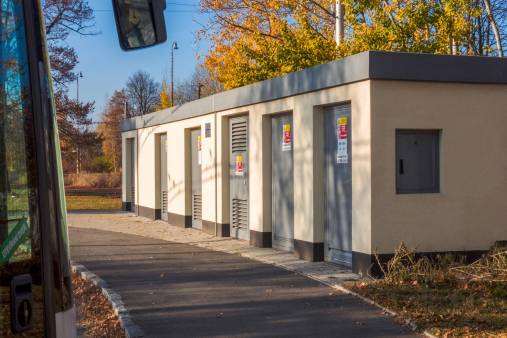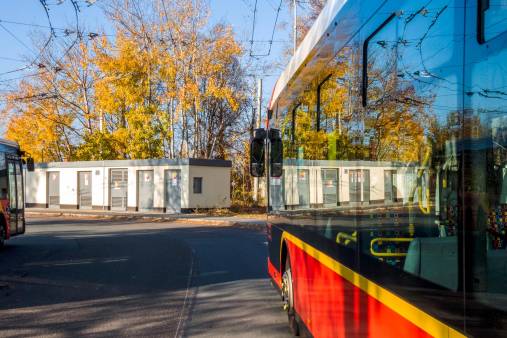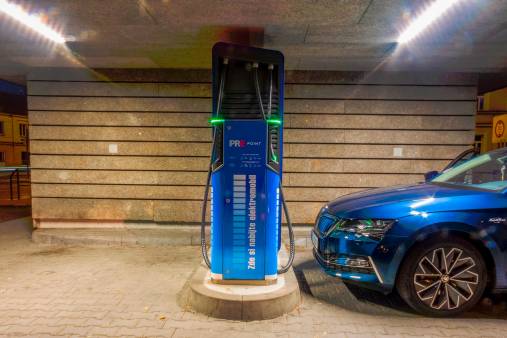CONSTRUCTION FOR ELECTROMOBILITY
The transition to electromobility requires the construction of a large number of charging stations in a very short time. However, the relatively lightly-builtcharging stations need to be accompanied by more space-intensive substations that will reinforce the electricity distribution network and provide sufficient power for ultra-fast charging. The transformation of high voltage takes place in close proximity to passers-by, so it is necessary to ensure maximum safety for both pedestrians and station operators. That's what we, GRITEC, are here for.
We can provide perfect solutions to the spatial location of the substation, provide the station with the necessary power, maximum safety, and configuration according to the customer's needs, and do it in a very short time.
- walk-in substations providing maximum performance and the greatest number of configurations,
- compact substations are an economical option and take up little space,
- underground substations that completely preserve the appearance and smooth operation of their surroundings.
Our solutions are divided into three groups:
Thanks to prefabrication, jointless casting, and our own certified ventilation systems, we achieve maximum safety in record-fast implementation times.
We can also equip charging stations with battery storage. We can implement the building above or below ground according to the customer's requirements.
Our experience in building substations for electromobility is demonstrated in the following selection of reference buildings.
PILOT PROJECTS
Clean energy from the Elbe River charges electric cars in Lovosice
On the road between Prague and Berlin, a unique solution has been created to take Czech electromobility to the next level.
All electricity is produced without emissions at the small hydroelectric power plant Píšt'any on the Elbe River. This weir power plant was put into operation in September 2010. It is equipped with four Kaplan turbines. Its power output is 2930 kW and the turbines have a capacity of 200 m3/s.
Electricity is supplied from the other side of the Elbe via a cable buried under the river bed. The cable is then laid in the ground and leads to a transformer station where the high voltage of 22 kV is transformed into a low voltage of 400 V.
The construction of the substation by GRITEC consists of a jointless concrete body cast using the so-called bell casting method. The watertight concrete resistant to an aggressive environment prevents water and moisture from penetrating inside. The concrete oil sump, in turn, catches oil leaks in the event of a transformer failure.
"The safety of our substation is ensured by a complete system with precisely defined elements," says Ing. Miroslav Morávek, Sales Director of GRITEC. The concrete body is structurally designed to withstand the effects of internal overpressure. The construction of the doors and ventilation elements must be equally resistant. We manufacture these components ourselves under the METALLBAU brand name. The floor frame with plates, locks and jambs is also important. We always test this entire system with specific product types for arc fault effects in an independent testing facility. The test results are then documented by certificates."
The GRITEC substation transforms high voltage for three customers. The 1250 kVA oil transformer is for Tesla. A dry-type transformer with an output of 1000 kVA serves Ionity. The third and smallest transformer is an oil-immersed transformer with a capacity of 250 kVA and provides power for the city.
Twelve ultra-fast racks are available for charging electric vehicles. Eight of them belong to Tesla, four to Ionity. Václav Nývlt, editor of the automotive magazine Idnes.cz, describes his experience with charging his Audi e-Tron GT as follows: "Another six minutes later for a 200-kilometre journey, another 10 minutes later for a 300-kilometre journey. In 21 minutes, we've completed 300 kilometres of range without a single gram of CO2 or other unwanted emissions escaping into the air."
Hradec Králové is leading the way with electric city buses
In order to switch to a cleaner variant of urban transport, we installed two substations for the transport company. The first one stands in the depot and is designed for slow charging. The second substation is located at the Cihelna terminus and is used for both fast charging and to reinforce the power supply to the trolleybus network. The newly built Mass Transport Terminal had sufficient capacity and the construction of a new substation was not necessary.
The Hradec Králové Transport Company is a pioneer and leader in the field of electric buses. It currently transports passengers in 135 vehicles, including 23 electric buses, 41 trolleybuses and 71 diesel buses. Hradec Králové thus has the largest number of electric buses in the Czech Republic.*
Since the start of trials in 2013, electric buses have covered more than 3 million kilometres in the city.*
The phasing out of old buses with Euro 2 emission standards has not only led to cleaner mobility, but also to a reduction in their noise level and greater passenger satisfaction. The electric buses are equipped with air conditioning, USB sockets and a body tilting system for comfortable boarding for wheelchair users, children and the elderly.*
*Source: Dopravní podnik města Hradce Králové, data from 2021
Charging station with battery storage and photovoltaic panels in Prague
A charging station for electric vehicles has been built in Prague's Holešovice, the first in the Czech Republic to combine high-capacity battery storage and its own energy source. GRITEC could not miss out on this, of course.
Our walk-in station UF 3066 has been given a timeless design and has been suitably integrated together with charging stands into the public space in front of HC Sparta Prague’s Tipsport Arena. 30 photovoltaic panels are installed on the roof of the station. The batteries stored in the station are used not only to recharge electric vehicles, but also to balance the voltage in the surrounding grid.
The charging racks are designed for two electric cars and possibly one electric scooter or electric bicycle. The capacities of the stands are 2x 22kW and 1x 50 kW. The output of the PV plant is 7.35 kWp. The capacity of the batteries is 108 kWh, with 87 kWh usable. The battery system stabilizes the voltage in the network, regulates the frequency and stores the surplus from the PV system.
OTHER REFERENCE CONSTRUCTION PROJECTS
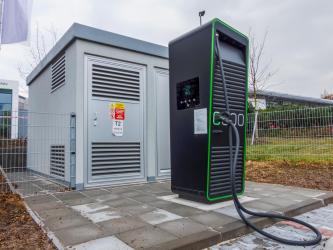
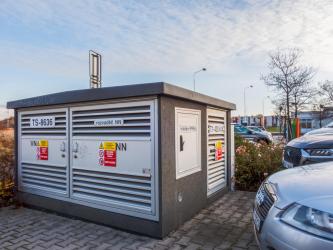

INSTALLATION OF TRANSFORMER SUBSTATION FOR CHARGERS IN LIBEREC
We will find the optimal solution for your project. Ask our sales and technical representatives for advice or a no-obligation price offer.











